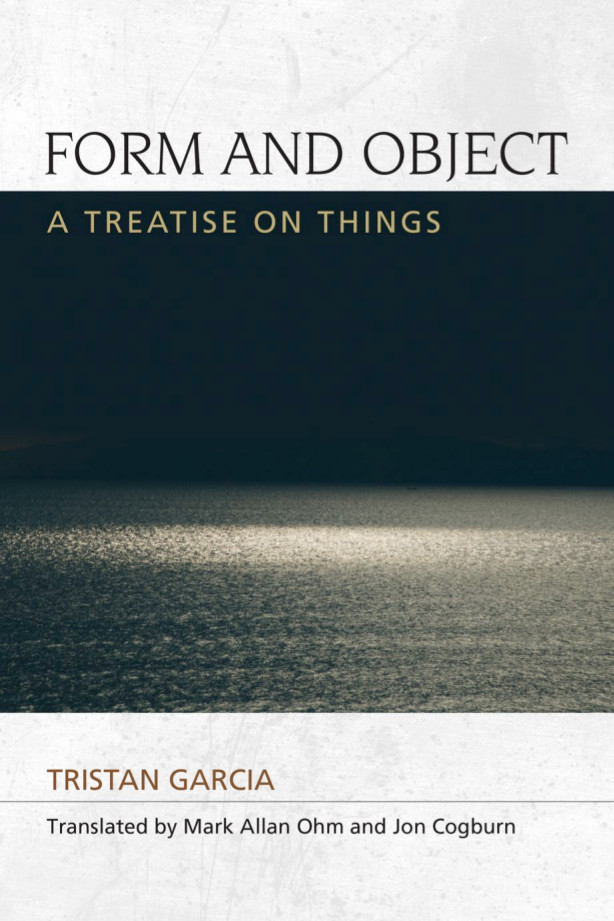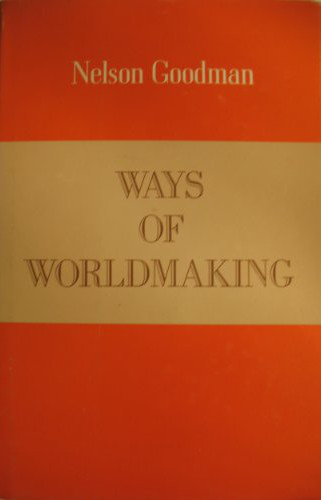Tristan Garcia: Form and Object: A Treatise on Things (2011–)
Filed under book | Tags: · animal, art, being, body, culture, economy, event, evolution, form, gender, human, knowledge, life, metaphysics, nature, nothing, object, ontology, philosophy, relation, representation, self, thing, time, value

“What is a thing? What is an object? Tristan Garcia aims to overturn 100 years of Heideggerian orthodoxy about the supposedly derivative nature of objects to put forward a new theory of ontology that gives us new insights into the world and our place in it.
Garcia’s original and systematic formal ontology of things strips them of any determination, intensity or depth. From this radical ontological poverty, he develops encyclopaedic regional ontologies of objects. By covering topics as diverse as the universe, events, time, the living, animals, human beings, representation, arts and rules, culture, history, political economy, values, classes, genders, ages of life and death, he shows that speculative metaphysics and ontology are alive and well.”
First published as Forme et objet. Un traité des choses, PUF, Paris, 2011.
Translated by Jon Cogburn and Mark Allan Ohm
Publisher Edinburgh University Press, 2014
ISBN 0748681493, 9780748681495
462 pages
On Graham Harman’s System and My Own by Garcia (2013), Harman’s response.
Interviews with Garcia: by Liam Jones (Figure/Ground, 2014), Philosophical Readings (2014).
Reviews and commentaries: Jean-Clet Martin (2012, FR, ES), Harman (Continent, 2012), Nathan Brown (Radical Philosophy, 2014).
Wikipedia (FR)
Publisher
WorldCat
PDF, PDF (updated on 2018-5-8)
Comment (0)Nelson Goodman: Ways of Worldmaking (1978–) [EN, DE, ES, CZ, CR]
Filed under book | Tags: · aesthetics, art, art theory, epistemology, knowledge, metaphysics, perception, philosophy, representation, science, style, truth

“A major thesis of this book is that the arts must be taken no less seriously than the sciences as modes of discovery, creation, and enlargement of knowledge in the broad sense of advancement of the understanding, and thus that the philosophy of art should be conceived as an integral part of metaphysics and epistemology.” (p 102)
Publisher Hackett Publishing, Indianapolis, 1978
ISBN 0915144514, 9780915144518
148 pages
Reviews: Hilary Putnam (Journal of Philosophy, 1979), W. Charlton (Philosophical Quarterly, 1980), Robert Howell (Philosophical Review, 1982), Jay F. Rosenberg (Noûs, 1982), Jon W. Sharer (Leonardo, 1981).
Commentaries: Xavier de Donato-Rodríguez (Theoria, 2009), Pierre-André Huglo (Philopsis, 2012, FR).
Preface to an Italian edition (Achille C. Varzi, 2008, IT)
Commentary on Goodman’s aesthetics (Stanford Encyclopedia of Philosophy).
Ways of Worldmaking (English, 1978; HTML).
Ways of Worldmaking (English, UK edition by Harvester Press, 1978)
Weisen der Welterzeugung (German, trans. Max Looser, 4th ed., 1984/1998, added on 2014-10-28)
Maneras de hacer mundos (Spanish, trans. Carlos Thiebaut, 1990, no OCR)
Způsoby světatvorby (Czech, trans. Vlastimil Zuska, 1996, first 4 chapters, HTML)
Načini svjetotvorstva (Croatian, trans. Damjan Lalović, 2008)
Peter Sloterdijk: Derrida, an Egyptian: On the Problem of the Jewish Pyramid (2006/2009)
Filed under book | Tags: · dreams, language, metaphysics, ontotheology, philosophy

“Shortly before his death in 2004, Jacques Derrida expressed two paradoxical convictions: he was certain that he would be forgotten the very day he died, yet at the same time certain that something of his work would survive in the cultural memory. This text by Peter Sloterdijk – one of the major figures of contemporary philosophy – makes a contribution of its own to the preservation and continuation of Derrida’s unique and powerful work.
In this brief but illuminating text, Sloterdijk offers a series of recontextualizations of Derrida’s work by exploring the connections between Derrida and seven major thinkers, including Hegel, Freud and Thomas Mann. The leitmotif of this exploration is the role that Egypt and the Egyptian pyramid plays in the philosophical imagination of the West, from the exodus of Moses and the Jews to the conceptualization of the pyramid as the archetype of the cumbersome objects that cannot be taken along by the spirit on its return to itself.
‘Egyptian’ is the term for all constructs that can be subjected to deconstruction – except for the pyramind, that most Egyptian of edifices, which stands in its place, unshakeable for all time, because its form is the undeconstructible remainder of a construction that is built to look as it would after its own collapse.”
First published in French as Derrida, un Égyptien, Maren Sell Éditeurs, Paris, 2006
Translated by Wieland Hoban
Publisher Polity, 2009
ISBN 0745646395, 9780745646398
80 pages
PDF, PDF (updated on 2015-12-13)
Comments (3)
